
Ivy might look pretty, but you probably don’t want it in your garden. Learn how much it’ll cost to remove ivy by type, treatment method, and more.
Grow more parsley, sage, rosemary, and thyme—even when space is at a premium


There's nothing quite like the taste of fresh, home-grown herbs to finish off a dish. And having your favorite herbs to hand year-round is convenient, saves money, and adds a pleasant pop of color and fragrance. If you're struggling for space in your home or yard, why not consider DIYing a vertical herb garden? There are many benefits to vertical gardening, and it's the perfect indoor solution if you don't have the climate or soil conditions to grow delicate herbs outdoors.
There are lots of possibilities, from budget upcycled designs to stylish solutions that fit your interior decor. Here are a few clever creations to inspire you.
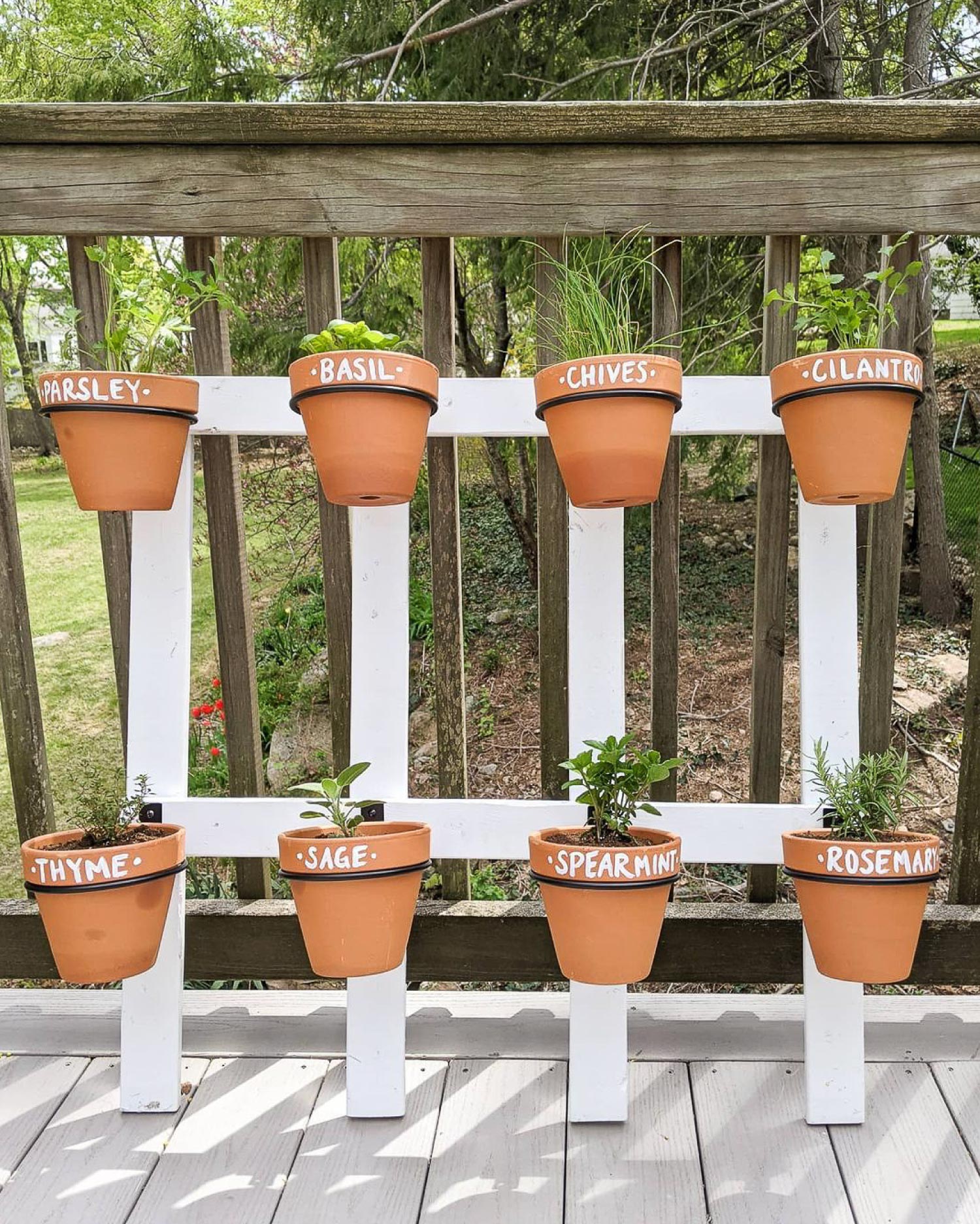
This attractive design from Emily Reera (@emilydoesinteriordesign) uses traditional terracotta planters and painted upcycled wooden boards.
Terracotta’s porous nature is ideal for herbs that appreciate drier potting soil—like rosemary, sage, and thyme. But the drainage holes in the pots mean this is only an outdoor option.
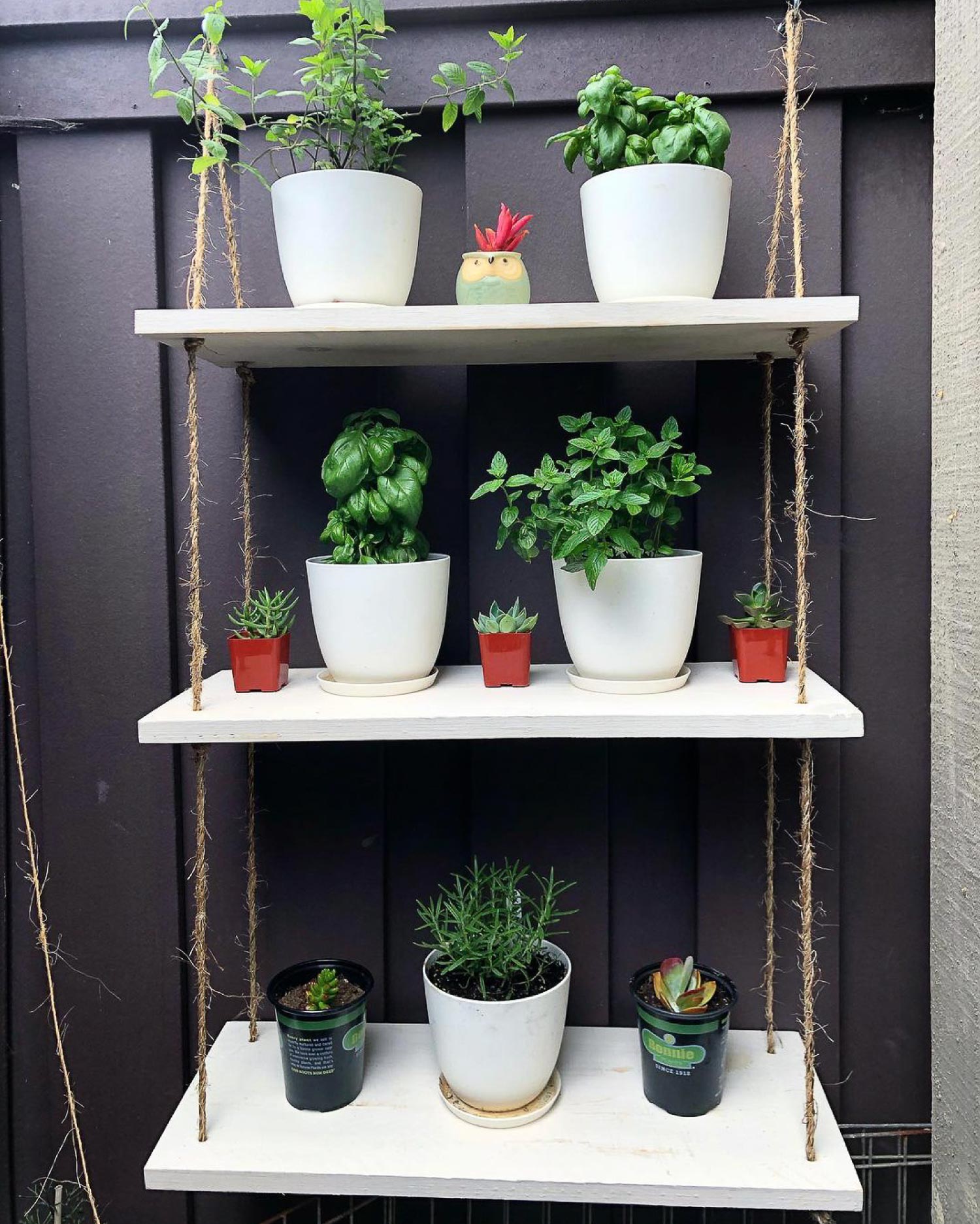
Kelsey Schuett (Kelsdyann) has gone for clean lines and contrasting colors with this herb shelves design. Hang this style outside in the balmy summer months and then bring it in over winter. Just make sure you select durable twine that holds the weight of the shelves and pots and treat the wood with a weather-resistant stain or paint.

Clare Foster (Bud to Seed) has gone for cottage garden vintage charm by housing her herbs in an auricula theater. First introduced in 1800s England, these three-sided shelving units displayed beautiful, spring-blooming auriculas (part of the Primula genus) while protecting the tender species from rain.
It's a perfect option for sheltering delicate herbs in the summer—like basil—while still allowing them access to enough light.
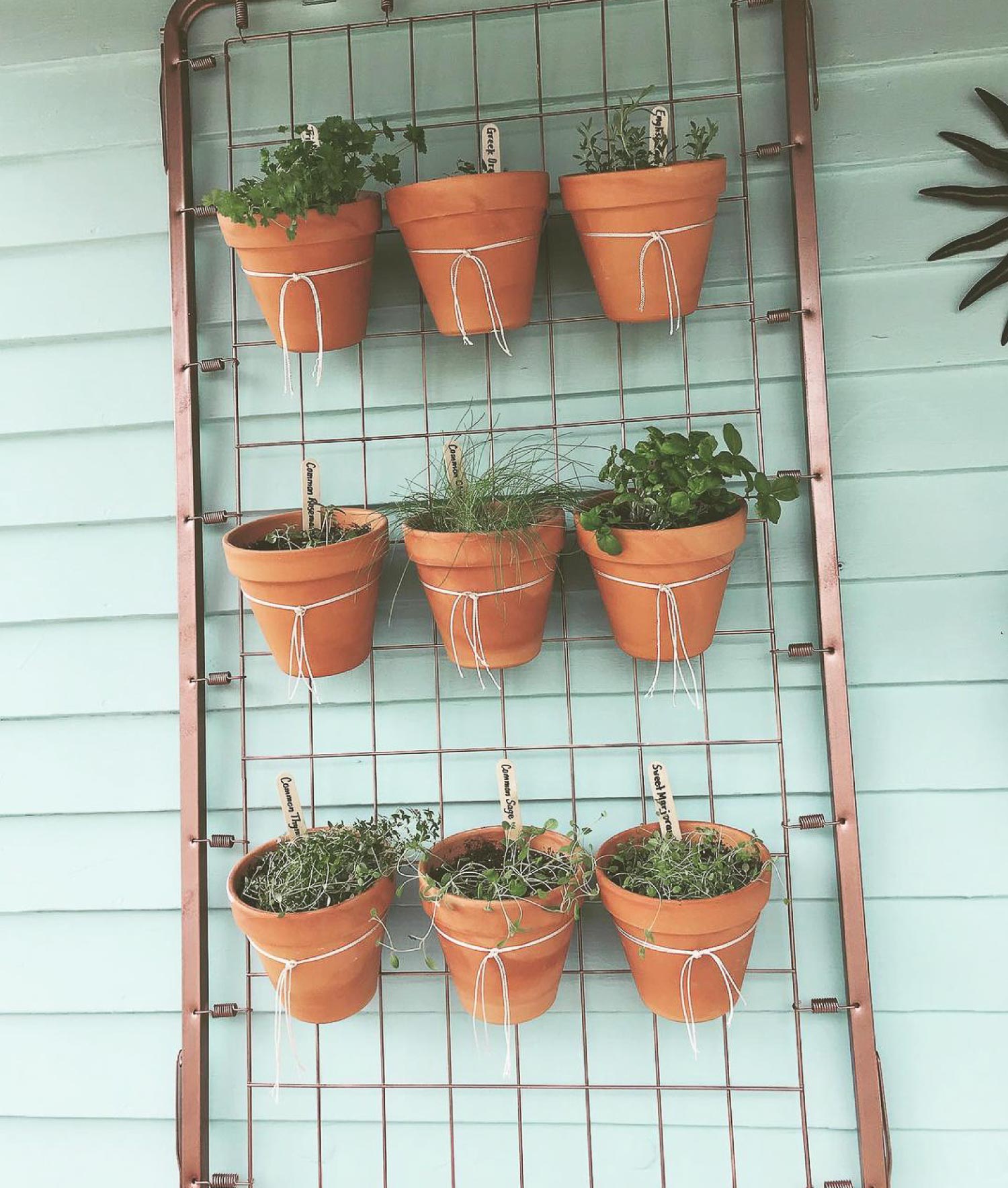
Cassie McGinley (Cassowary333) got creative and repurposed this crib base into her first herb garden. Select strong twine to attach the pots. Cassie also used a spot of glue to hold them even more securely in place.
If you’re a beginner, stick with the easy-to-grow varieties. Providing they have the right conditions, basil, chives, dill, parsley, and sage are just a few herbs that should provide an abundant harvest with little effort.
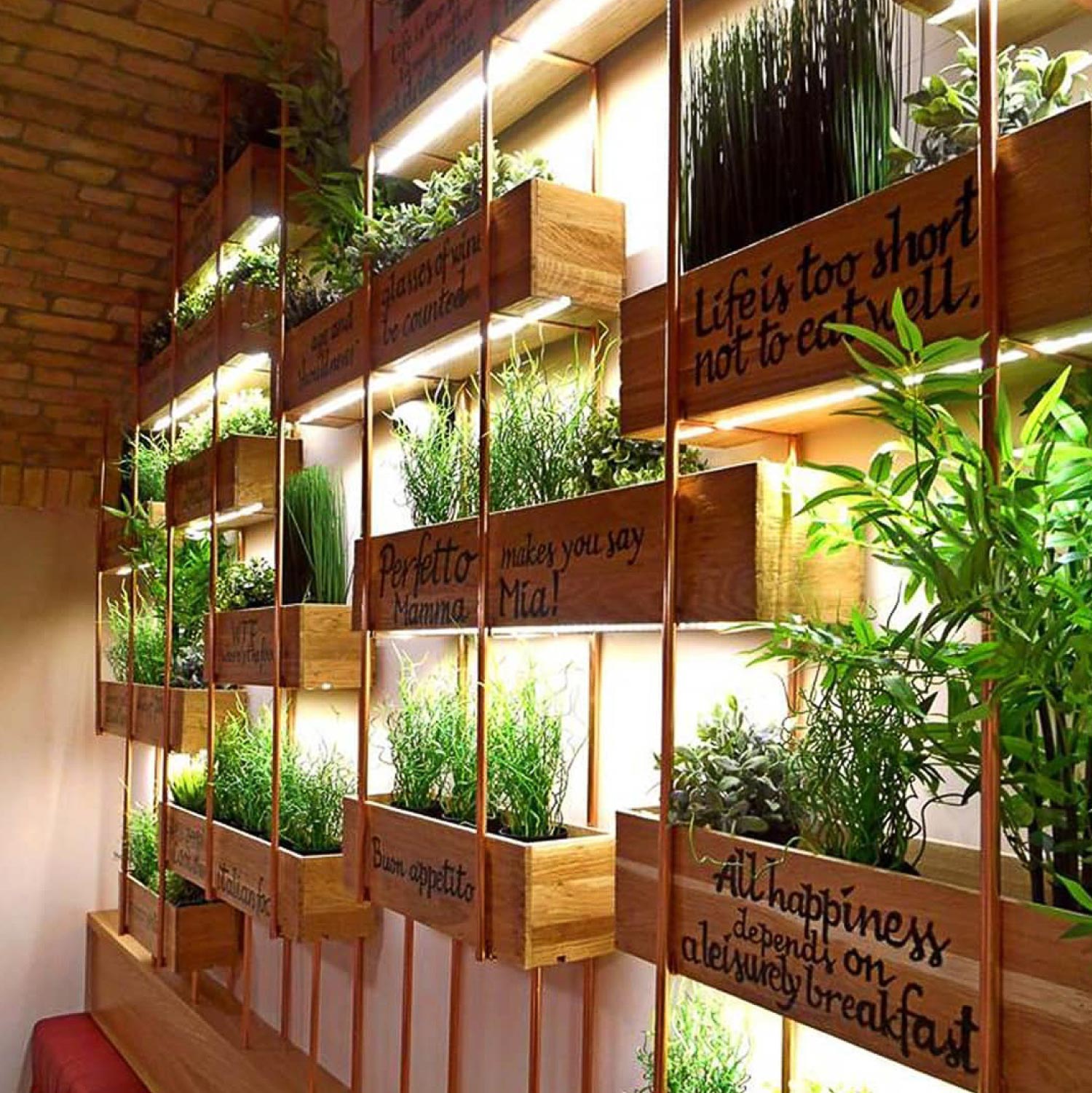
Illustrator Bátori-Kurucz Mária painted inspirational quotes on these wooden planters to finish off a great Italian restaurant herb wall in style. If your calligraphy skills aren't quite up to scratch, you can purchase stencils.
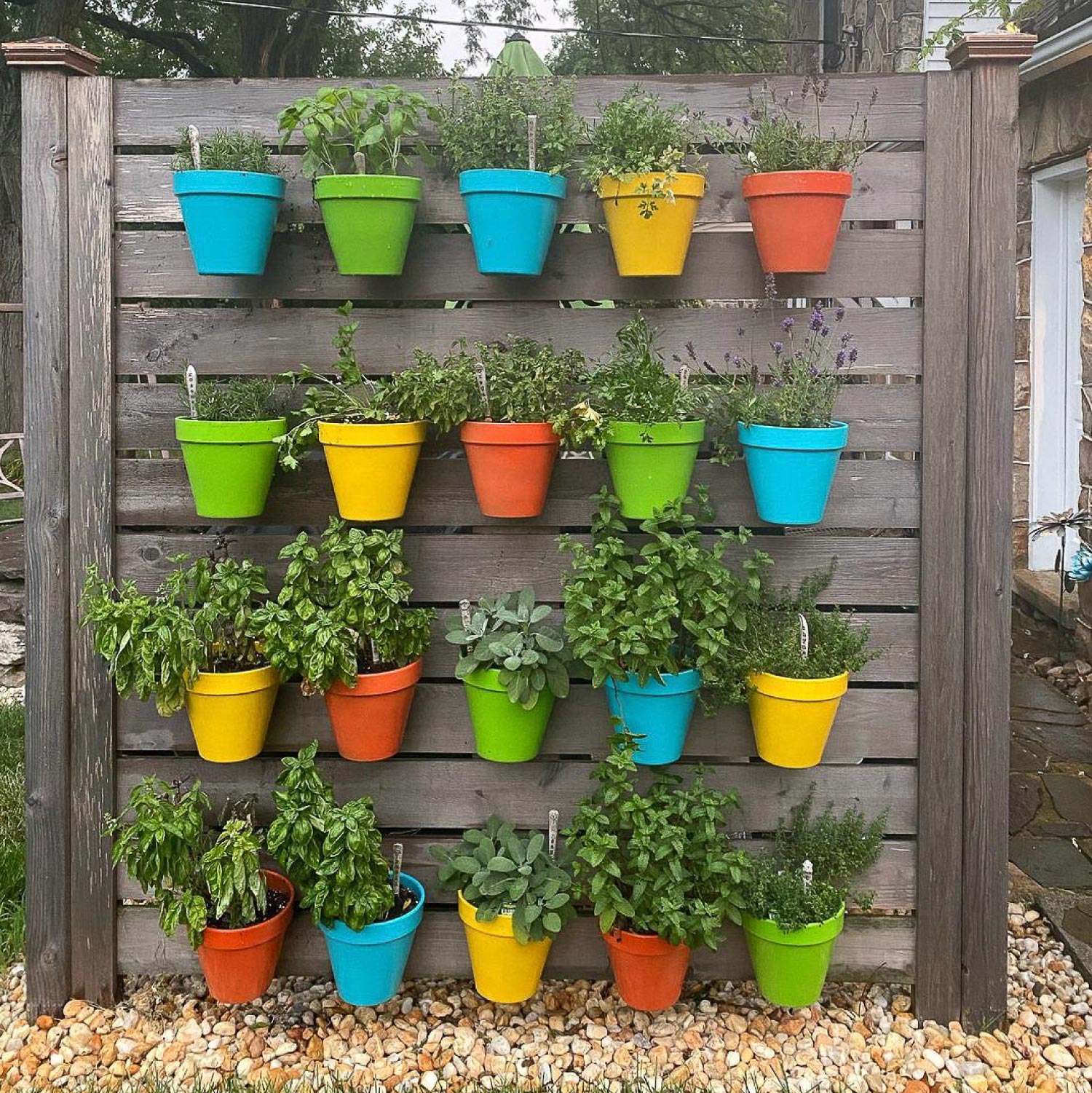
This striking DIY vertical herb garden design from Jessica Maloy (@palmyra_greenhouse) is perfect if you’re a lover of bold, bright colors and you're looking to add privacy to a section of your yard. Jessica uses hers to screen off a relaxing swinging chair from the street.
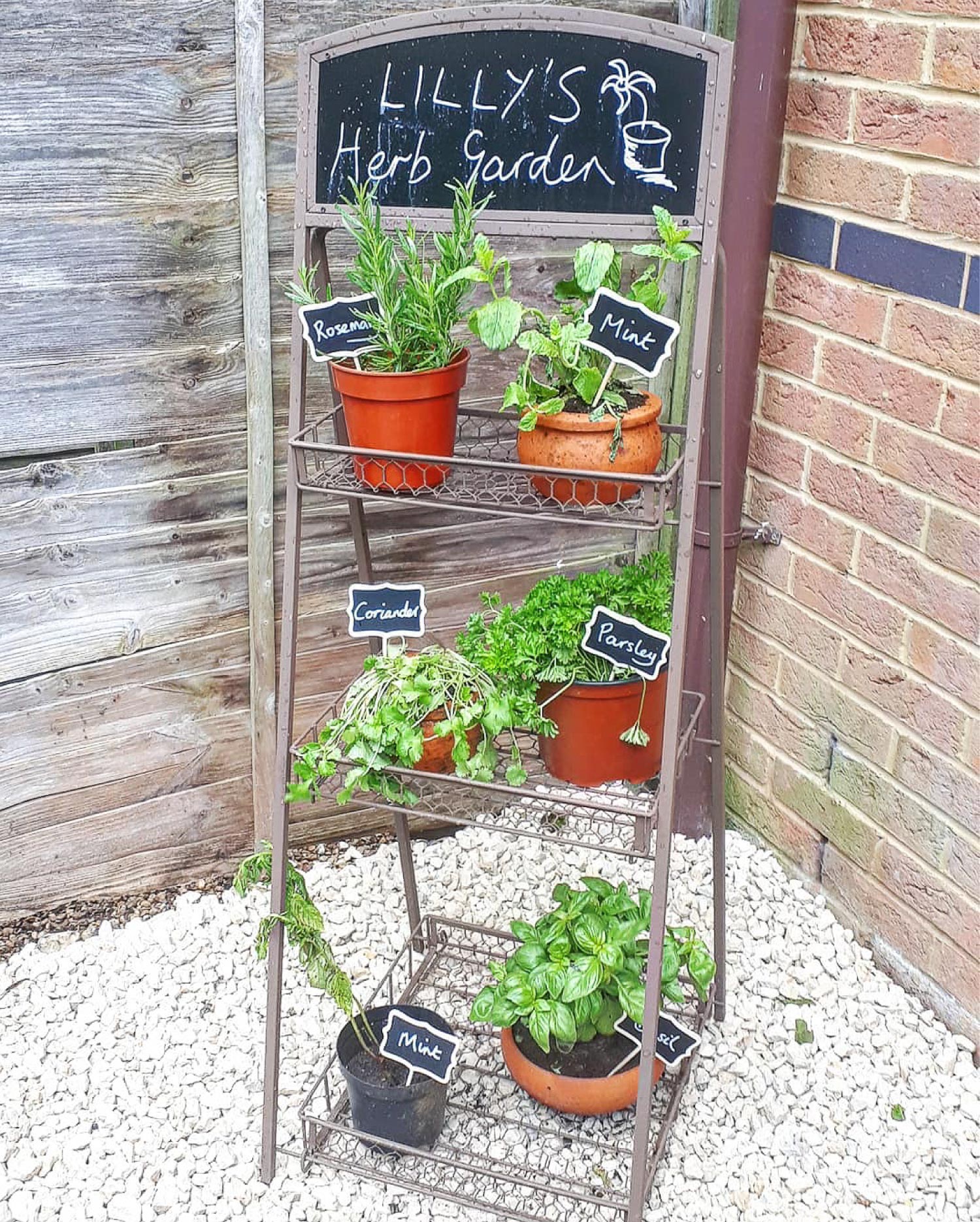
If you’re a lover of shabby chic design, hunt for a vintage-inspired stand like the one Emma (@emma_lilly_x) is using for her herb selection. Don’t forget, though, that herbs like basil are frost tender. Know when to plant this annual species and only have it outside if temperatures are consistently above 50 degrees Fahrenheit.
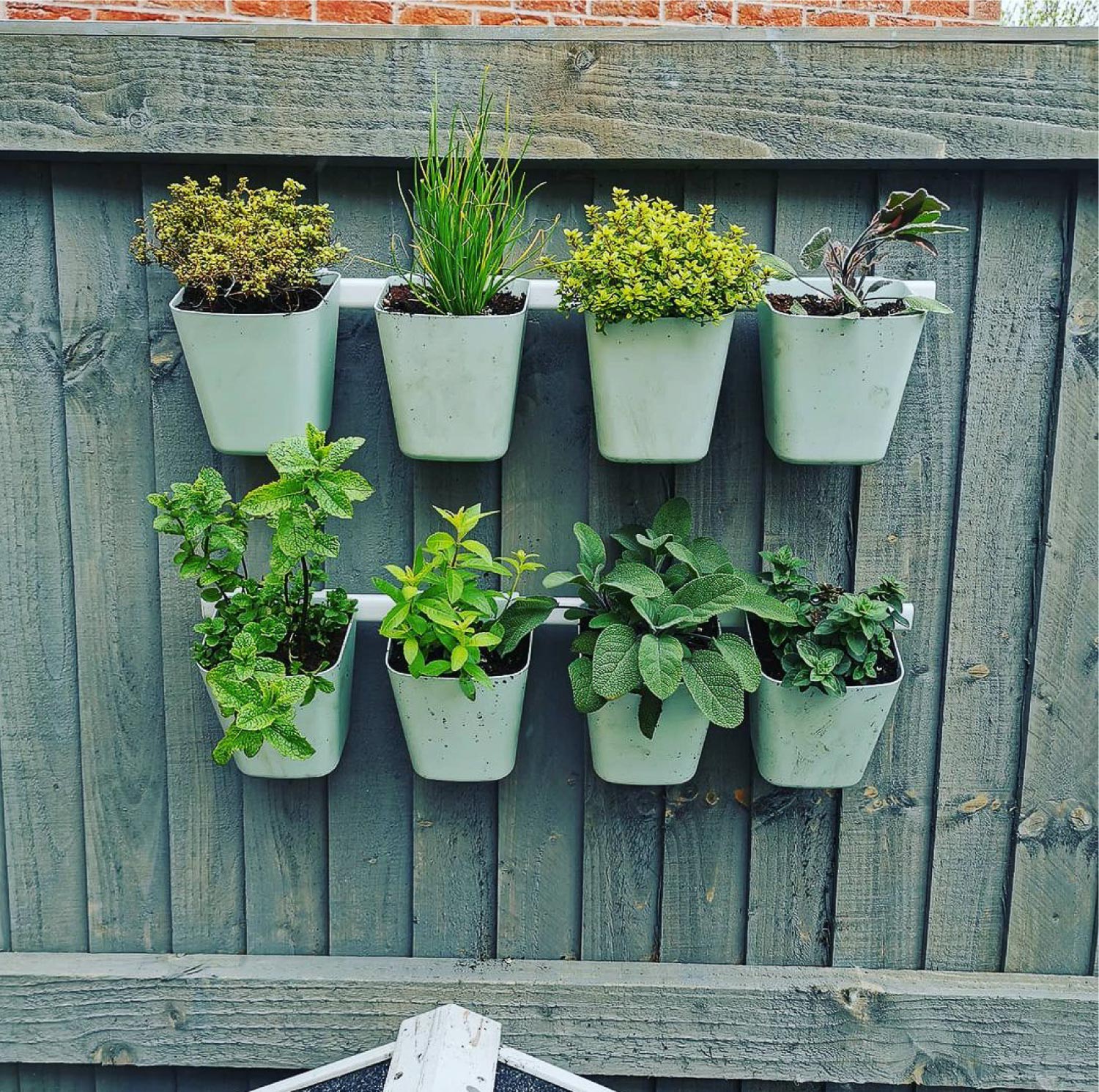
Vertical herb gardens don’t have to cost a ton. Follow this simple example from James Martin (@a_life_in_the_garden) and use budget planters. These cost him around a dollar each from IKEA, and he has them hanging close to the back door on inexpensive IKEA rails so he can grab a handful whenever he needs them.
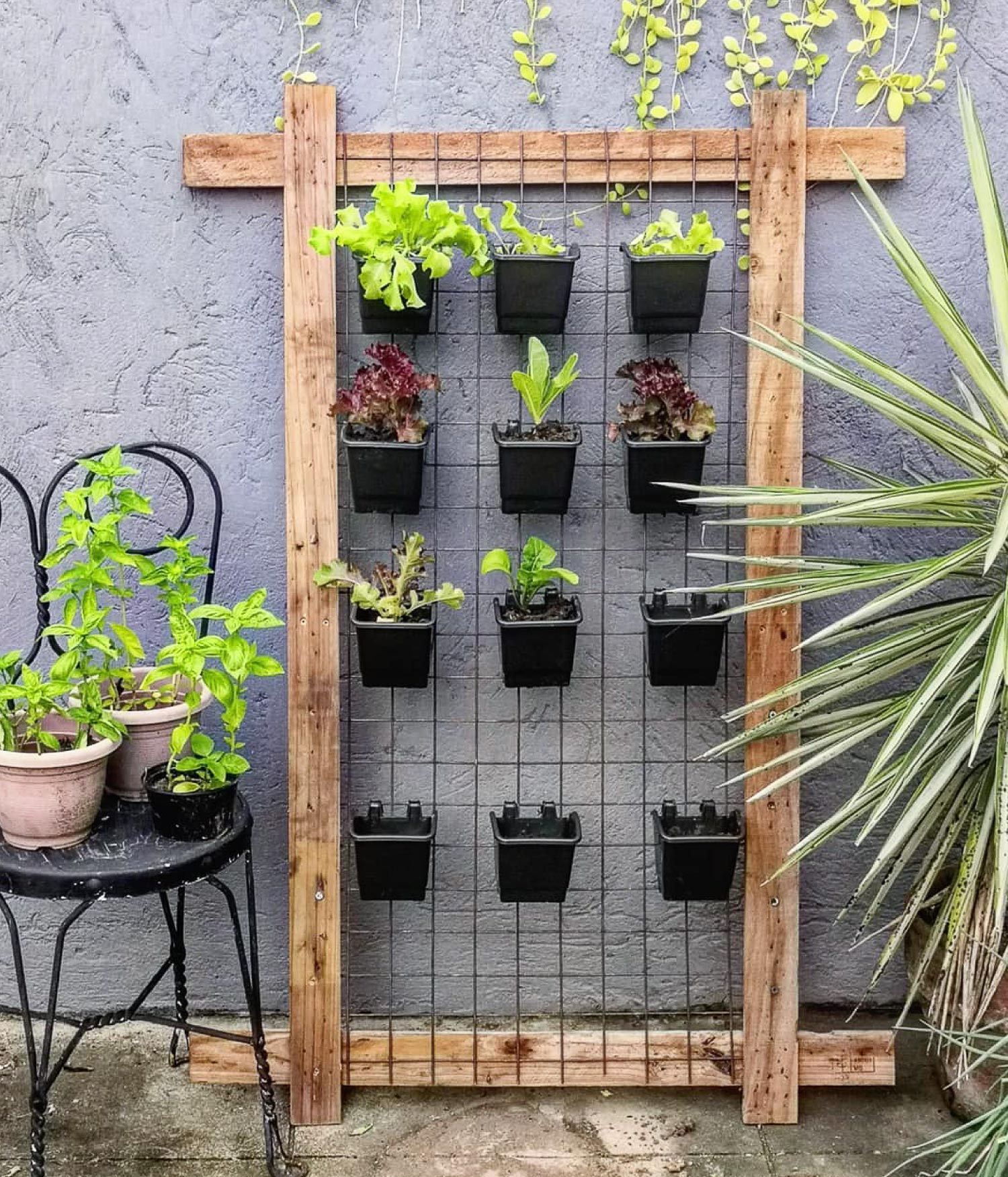
Donna Cuna-Pita takes repurposing to the next level. First, creating a headboard for her daughter’s hanging herb garden from a scrap wood pallet and steel matting—perfect for trailing with fairy lights. When she was ready for a change, Donna’s husband gave it a further makeover to use it as a vertical garden for salad greens and herbs.

Are you in love with the fuss-free, functional, and neutral vibes of farmhouse-style decor, like blogger Samm Yanniello (@momtimeonadime)? Then simple white hanging planters could be a perfect choice for your vertical herb garden.
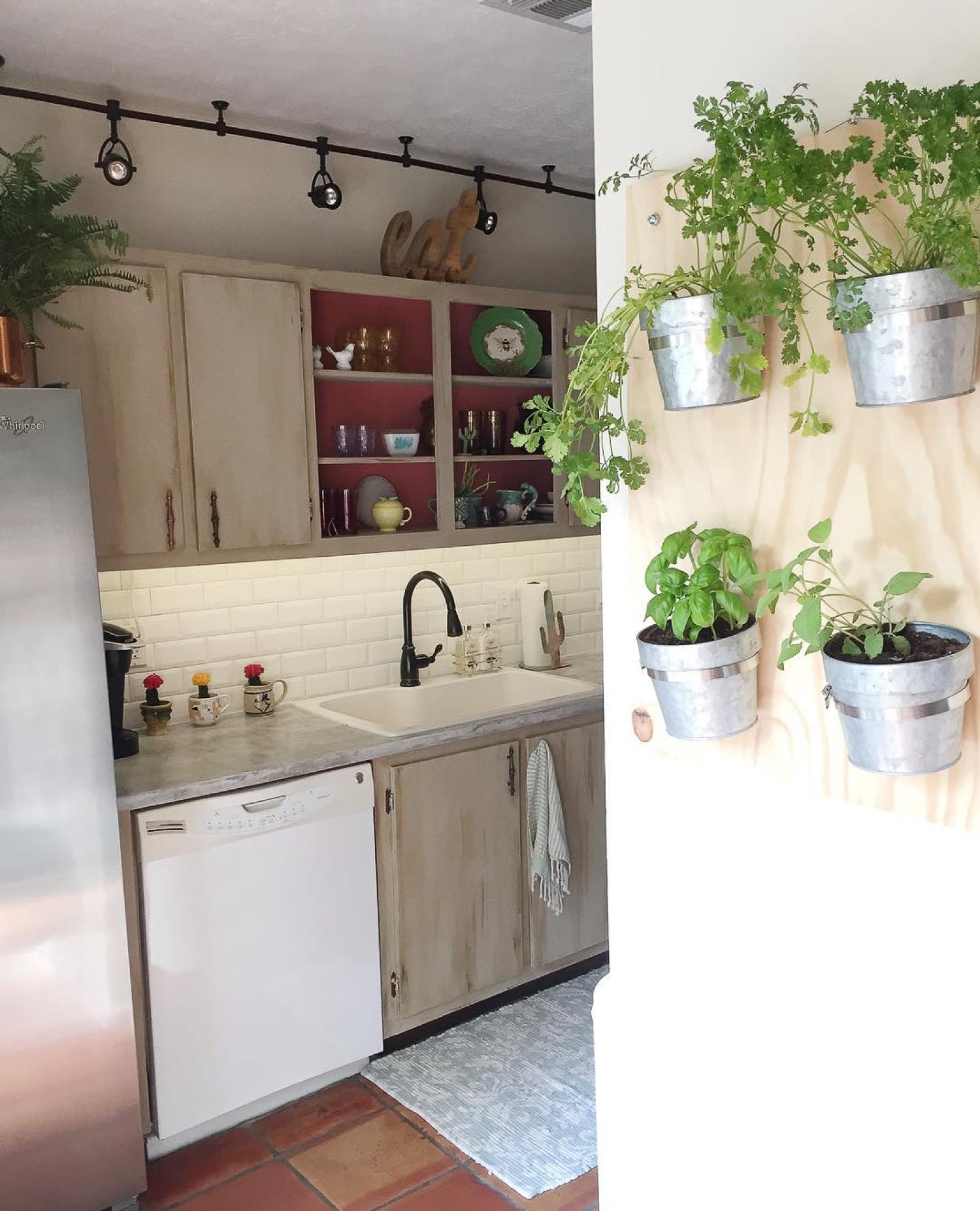
Michele Kirchmann’s (JacknGingVintage) vertical herb garden is a great indoor DIY set-up. Make sure you consider the available light, though. Michele had a few attempts before getting her herbs to survive. Most herb gardens appreciate receiving at least six hours of direct sunlight every day in a draft-free location. Positioning them near a south-or southwest-facing window is a good plan.
Opt for shade-loving herbs such as chives, parsley, and tarragon if you're struggling to provide anything but light morning sun.

Rick (@cant_ya_just) loves a repurposing project. One of the most popular DIY vertical herb garden designs is to recycle a wooden pallet. To make your planters as durable as possible, stain or paint the wood.
For best success, select herbs that grow in your region's USDA hardiness zone, position the pallet so it gets enough natural light, and watch out for overcrowding in the planters.
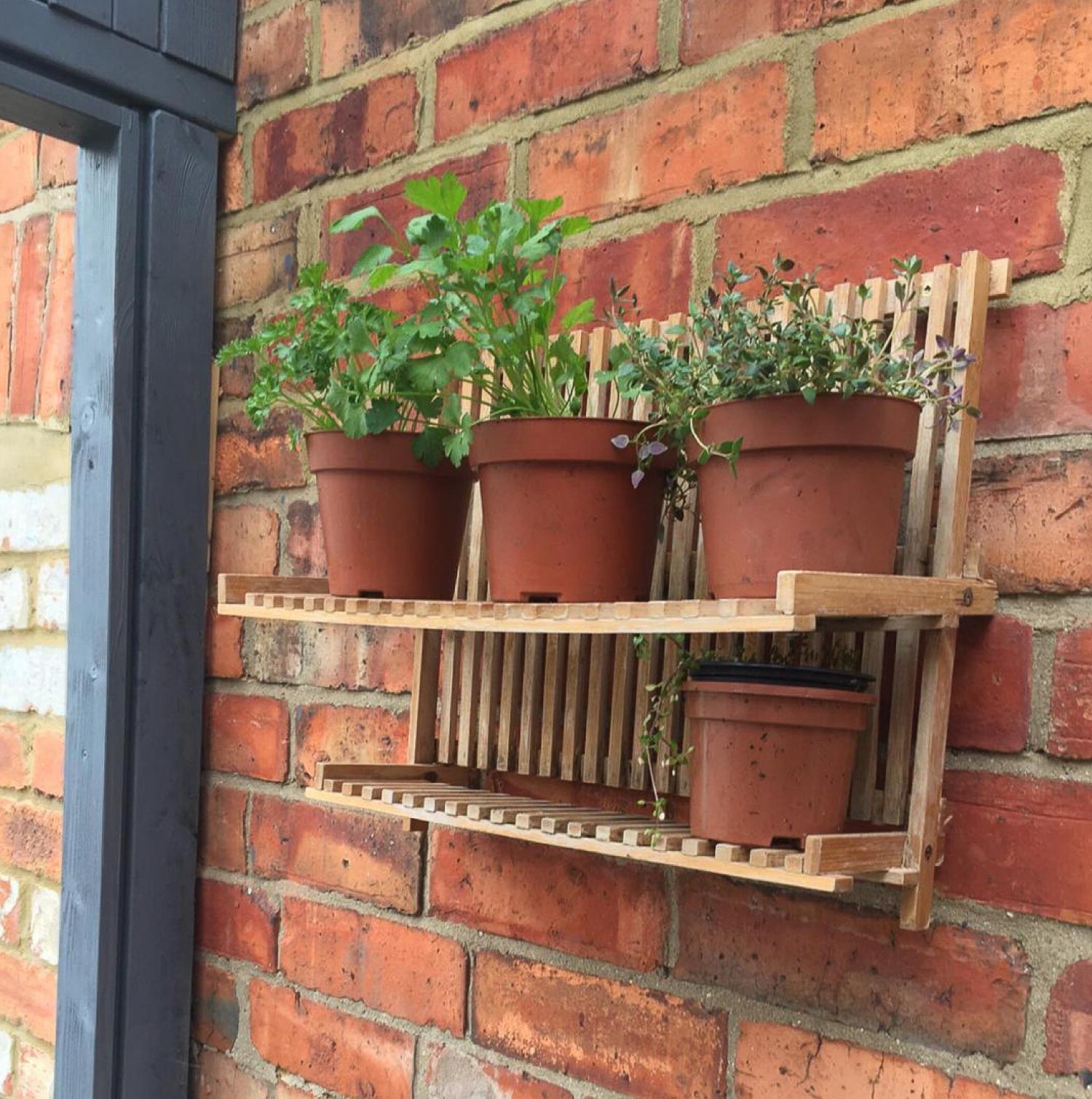
For upcycling fans, why not follow Nadege's (@nadegehoneydesigns) example and give your old dish rack a new lease of life.
Don’t forget to harvest your herbs regularly, especially for fast-growing species like mint. Pinching back the tips prevents the stems from becoming overly leggy and stops overcrowding.

Glenda’s (@Livingmivida) vertical herb garden utilizes a stylish, minimalist design. It works well on this sunny spot of the wall and compliments the tropical vibe created by the foliage of the tall banana and bird of paradise plants.
With planters like this, where drainage can be an issue, take care not to overwater. Moist, not waterlogged potting soil, is generally best.
From average costs to expert advice, get all the answers you need to get your job done.

Ivy might look pretty, but you probably don’t want it in your garden. Learn how much it’ll cost to remove ivy by type, treatment method, and more.

From your flower beds to your walkway, river rocks make a classic addition to your landscape. Learn about the cost to install river rock to set a proper budget.

Leveling your yard can help with drainage and prevent damage to your home. Learn the cost to level a yard in Columbus, OH, and what factors can affect the price.

Riprap prevents erosion and protects your shoreline when done right. Learn who to hire for riprap and how to find a licensed professional.

There are reasons to grade or slope your yard beyond aesthetics—drainage is the main one. Read on and learn how to have an informed discussion with your pro.

Overseeding your lawn can help fill in sparse areas and grow thick, lush grass without starting over. Find out how to overseed a lawn successfully.